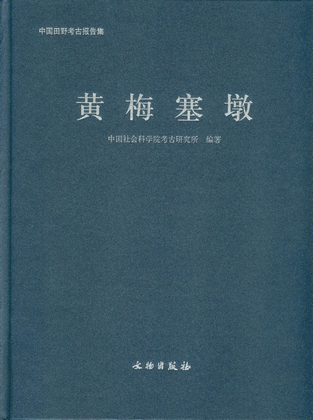EXCAVATIONS OF THE SAIDUN SITE IN HUANGMEI COUNTY
From:Chinese Archaeology NetWriter:Date:2011-10-25

Abstract
This monograph is a detail report and comprehensive research on the Neolithic Saidun 塞墩 cemetery in Huangmei 黄梅 county, Hubei 湖北Province.
The Saidun cemetery is located on the southwestern bank of the Longgan龙感 Lake, which is near the south foot of the eastern end of the Dabie大别Mountains and on the Jiujiang 九江 River alluvial plain near the bound of the Hubei and Anhui 安徽 provinces. The cemetery had been dug for three times from 1986 to 1988. The discoveries include 18 pits, 188 burials and more than 900 pieces of artifacts, all dating to the Neolithic period.
Based on the stratigraphy of the burials at Saidun, as well as the comparison with the data from the Xuejiagang 薛家岗 site in Qianshan潜山, Huangshanzui黄鳝嘴site in Susong 宿松and Wangjiadun王家墩site in Taihu 太湖, we suggest to name the Huangshanzui assemblasges and similar assemblages at above sites as a new archaeological culture--- the Huangshanzui culture. Saidun is the first site where assemblages(mainly burials ) of both the Huangshanzui culture and the Xuejiagang culture are recognized. The typological research on artifacts from Saidun shows a clear developmental trajectory of the two kinds of assemblages, and proves that the earlier Huangshanzzui cuulture might have been the main source of the later Xuejianggang culture.
Painted pottery (including outer surface painting, inner surface painting , white pottery and thin fine---clay black pottery) of the Huangshanzui culture at Saidun exhibits high craft standard and distinct characteristics. The huang璜 ornament with two sections connected by thread through drilled tiny holes and grooves is a typical artifact showing high standard of jade crafting. Several sacrificial pits with large animal bones and shards were also found. Typical characteristics of the burials of Huangshanzui period include the special filling soil in the shaft , marks of special burial furniture, secondary buried skeletons in extended supine position, both everyday usage pottery and funerary pottery used as burial offerings, and large stone at the corner of burial shaft or above the deceased.
The Xuejigang period assemblage, mainly burials , found at Saidun largely improves our knowledge of the Xuejiagang culture. Comparing with the Huangshanzui period burials ,we can see both similarities indicating the continue development and differences indicating significant changes. Pig lower jaws and even complete small pits or shaft area ---with wooden coffins and finely made stone yue 钺 axes, jade jue 玦 ear-rings, huang ornaments and connected bi ornaments, indicating clear social hierarchy.
Both the Huangshanzui and Xuejiagang assemblages show the communication with their contemporary archaeological cultures in the Middle and Lower Yangtze River valleys and in the Haidai 海岱area. The communication can be recognized from the similarity on pottery style, common raw materials, and special customs such as teeth extraction.

